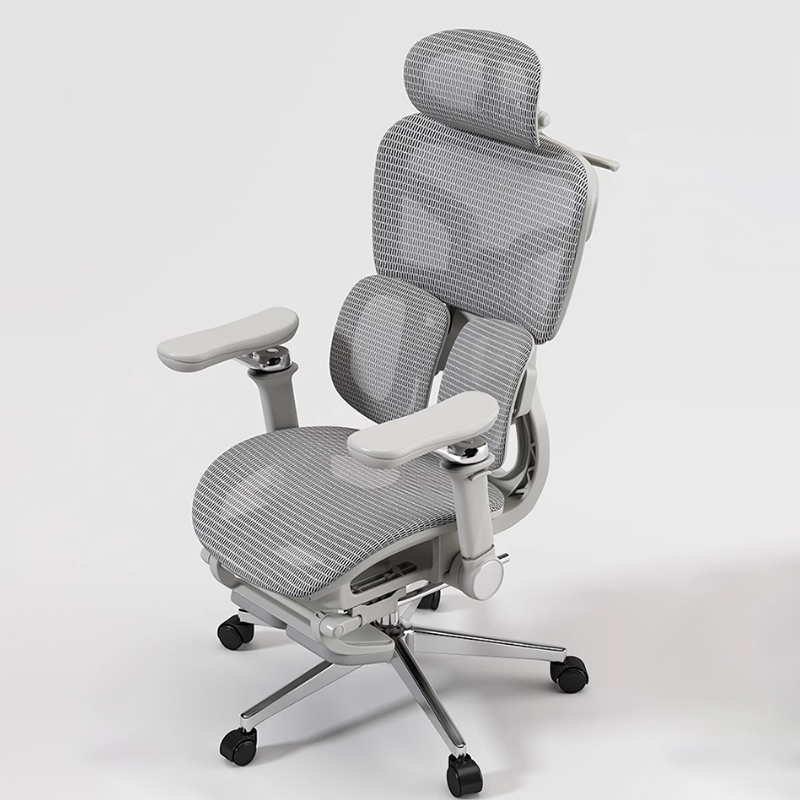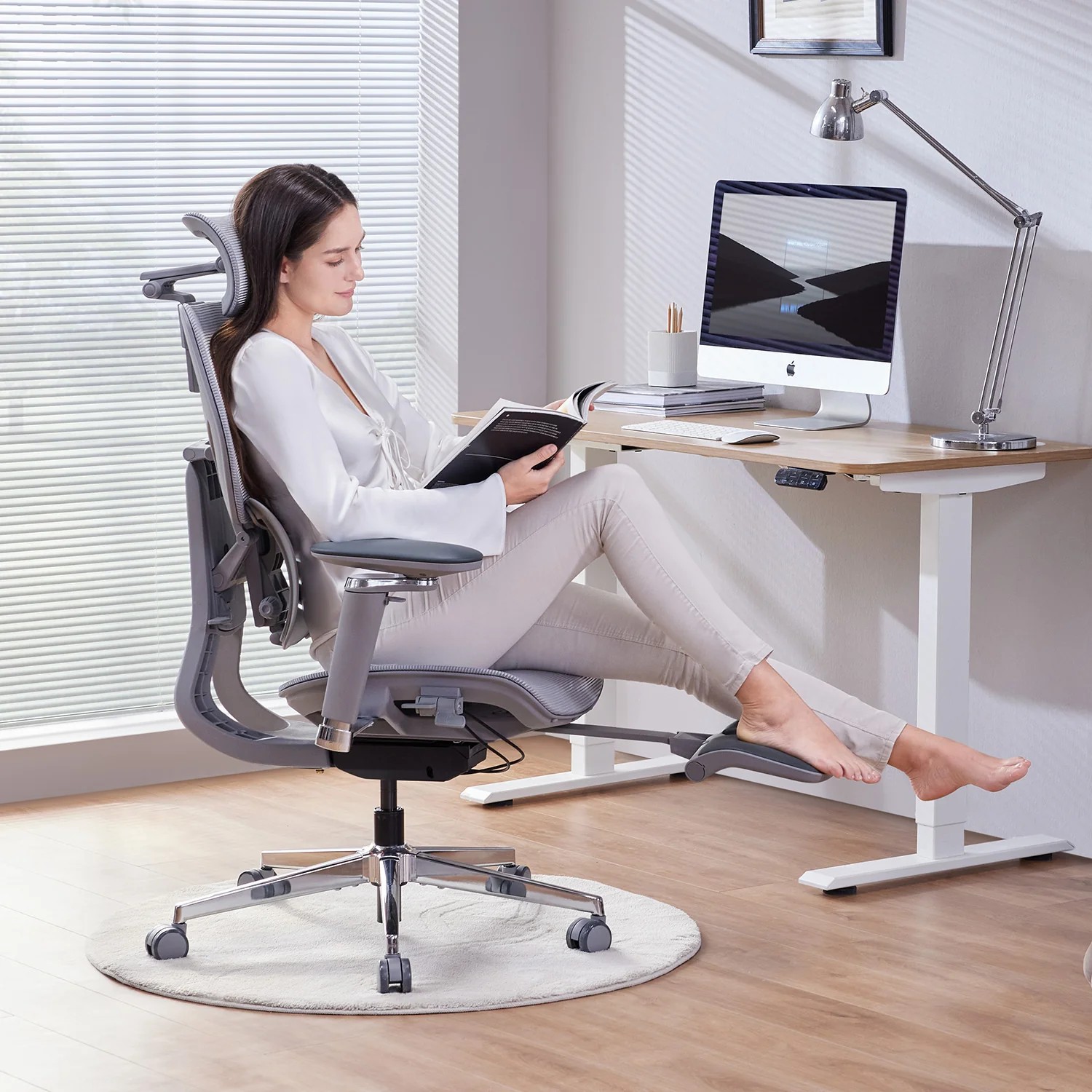Back pain is one of the most common ailments affecting millions around the world, especially those spending long hours seated at desks. For retailers, wholesalers, and distributors of ergonomic chairs, understanding the science behind “chairs for back problems” isn’t just helpful — it’s essential. Knowing why and how ergonomic chairs work empowers you to better serve your customers and grow your business in a market that values health and comfort.
In this article, we unpack the physiological reasons behind back pain, explore critical ergonomic chair features scientifically proven to alleviate discomfort, and recommend two of our standout office chairs designed specifically for lower back support: the cost-effective DLS-T9 and the premium DLS-G4.
Why Are Back Problems So Common?
Modern lifestyles, typified by long hours seated at desks, have made back problems a pervasive issue worldwide. According to the World Health Organization, lower back pain is among the leading causes of disability globally. But not all back pain is the same, and understanding the types helps clarify what chairs should address.
Common Back Pain Issues Explained
Lower back pain: The most frequently reported, often caused by poor posture or inadequate lumbar support while sitting. It manifests as muscle strain, discomfort, or stiffness affecting the lumbar spine region.
Sciatica: A nerve-related pain radiating from the lower back down the legs due to compression or irritation of the sciatic nerve. Prolonged poor seating positions can exacerbate this condition by increasing pressure on the lower spine.
Upper back pain: Commonly linked to unsupported shoulders, poor armrest positions, or improper headrest angles, causing tension and strain in the thoracic spine and shoulder blades.
When sitting for extended periods, many people unknowingly adopt slouched postures that exacerbate these problems, compressing vertebrae and straining muscles. This highlights why “chairs for back problems” cannot be one-size-fits-all but must incorporate thoughtful, evidence-based design.
What Makes a Chair Truly Ergonomic for Back Problems?
Ergonomic chairs aren’t just about comfort or fancy looks. Their core purpose is to promote spinal health by enabling a neutral posture where the natural curves of the spine are maintained. But which features make the difference when it comes to combating lower back pain?
Critical Chair Features That Combat Lower Back Problems
Adjustable Lumbar Support
Research consistently shows that lumbar support is paramount. A chair that offers adjustable lumbar support allows individuals to maintain the natural inward curve of the lower spine. This reduces shear forces on spinal discs and prevents chronic strain. Studies point to significant pain reduction when lumbar supports are optimized specifically for the user's anatomy.
Seat Height and Depth Adjustment
Correct seat height enables feet to rest flat on the floor, which stabilizes pelvic position and prevents the hips from tilting backwards, a posture linked with lumbar strain. Similarly, adjustable seat depth ensures proper thigh support without cutting off circulation behind the knees, preventing restrictive sitting that can contribute to back and leg discomfort.
Backrest Recline and Tilt Tension
Dynamic sitting is critical. Chairs that allow the user to adjust recline angles and resistance encourage natural micro-movements, distributing spinal pressure more evenly and reducing compression on the vertebrae. This feature supports muscle relaxation during long tasks, decreasing fatigue.
Proper Armrest and Headrest Design
Unsupported arms force the shoulders to hunch forward, increasing upper back and neck tension. Ergonomically designed armrests that are height and width adjustable help maintain relaxed shoulder postures. Headrests that support the cervical spine prevent forward head posture, a common contributor to upper spinal discomfort.
Non-ergonomic or fixed chairs lacking these features make it difficult to achieve these postural goals, leading many users to develop chronic pain issues progressively.
Chairs for Lower Back Problems: How They Actually Work
The best ergonomic chairs aim to support, align, and relieve stress from the spine during prolonged sitting. Effective lumbar support pushes gently on the inward curve of the spine, preventing slouching and reducing disc pressure that causes pain.
Material also matters. Mesh backs provide breathability and conform to spinal contours, distributing weight while minimizing heat buildup. Padded cushions offer comfort but must be firm enough to support without sinking, which can misalign posture.
For example, compared to a generic office chair, a well-designed ergonomic chair reduces the sensation of stiffness and fatigue after hours of use. These chairs' adjustability allows each user to tailor seating to their unique body shape and work habits, a critical factor that off-the-shelf, non-adjustable chairs cannot provide.
Scientific Backing: Research and Expert Recommendations
A strong body of ergonomic and clinical research underpins these design principles. Occupational health studies emphasize that chairs with adjustable lumbar support and dynamic seating features reduce the risk of musculoskeletal disorders.
Certifications such as BIFMA (Business and Institutional Furniture Manufacturers Association) and AFRDI (Australasian Furnishing Research and Development Institute) validate that chairs meet rigorous ergonomic standards.
Our Recommended Ergonomic Chairs for Back Pain
DLS-T9 (Cost-Effective Option):

This chair includes double adjustable lumbar support pannel, multi-angle backrest recline, and ergonomically designed armrests, making it an affordable yet effective choice for customers seeking back pain relief. It balances essential ergonomic features with a competitive price, ideal for volume retailers and wholesalers.DLS-G4 (Premium Office Chair):

Designed for customers demanding advanced customization, the DLS-G4 offers fine-tuned seat depth adjustments, Dual mesh back support for enhanced ventilation, and the highest level of lumbar and headrest ergonomics. This chair is perfect for distributors targeting premium segments or showroom displays demonstrating cutting-edge comfort.
Both models have received positive feedback from users with lower back pain and reflect current ergonomic research, making them solid recommendations for your sales portfolio.
How to Educate Customers and Position These Chairs for Maximum Impact
Understanding the science behind these chairs equips your sales teams to engage customers confidently. Teach them to emphasize how adjustable lumbar support and dynamic seating features translate into real pain relief, improved focus, and enhanced productivity.
Utilize in-store demonstrations allowing customers to try different settings and experience lumbar support firsthand. Online, craft product descriptions rich with keywords like “chairs for back problems” and “chairs for lower back problems” to capture search traffic and educate visitors.
Visual aids such as videos or infographics explaining spinal health can build trust and interest. Certifications and clinical endorsements should be prominently displayed to reinforce chair credibility.
Conclusion
Back problems are a growing concern, but thoughtful ergonomic chair design backed by science can make a tangible difference. For furniture retailers, wholesalers, and distributors, offering chairs engineered for lower back support is both a market opportunity and a responsibility.
The DLS-T9 and DLS-G4 models represent compelling choices for your customers, combining proven ergonomic science with quality and value. By equipping your sales teams with knowledge and positioning these products expertly, you can meet rising demand and build a reputation for promoting healthful seating.
If you’re ready to enhance your inventory and help customers sit better and pain-free, don’t hesitate to explore the DLS ergonomic chair range today.

